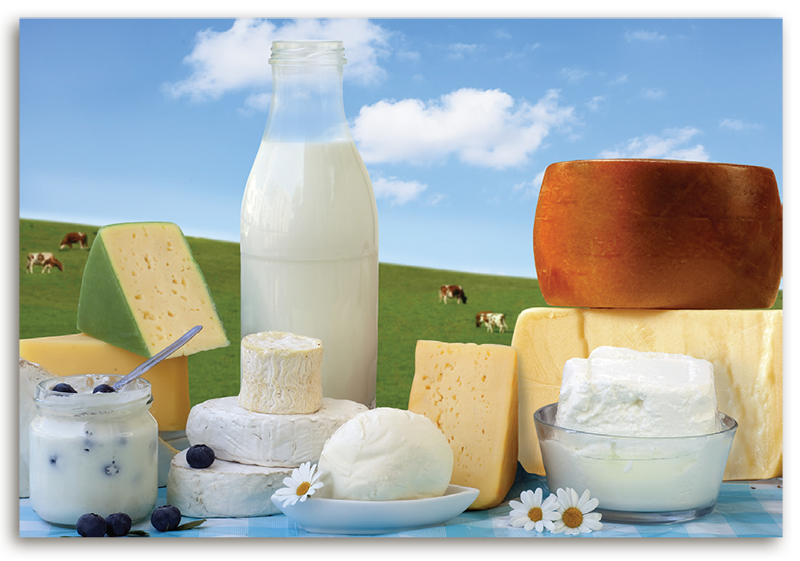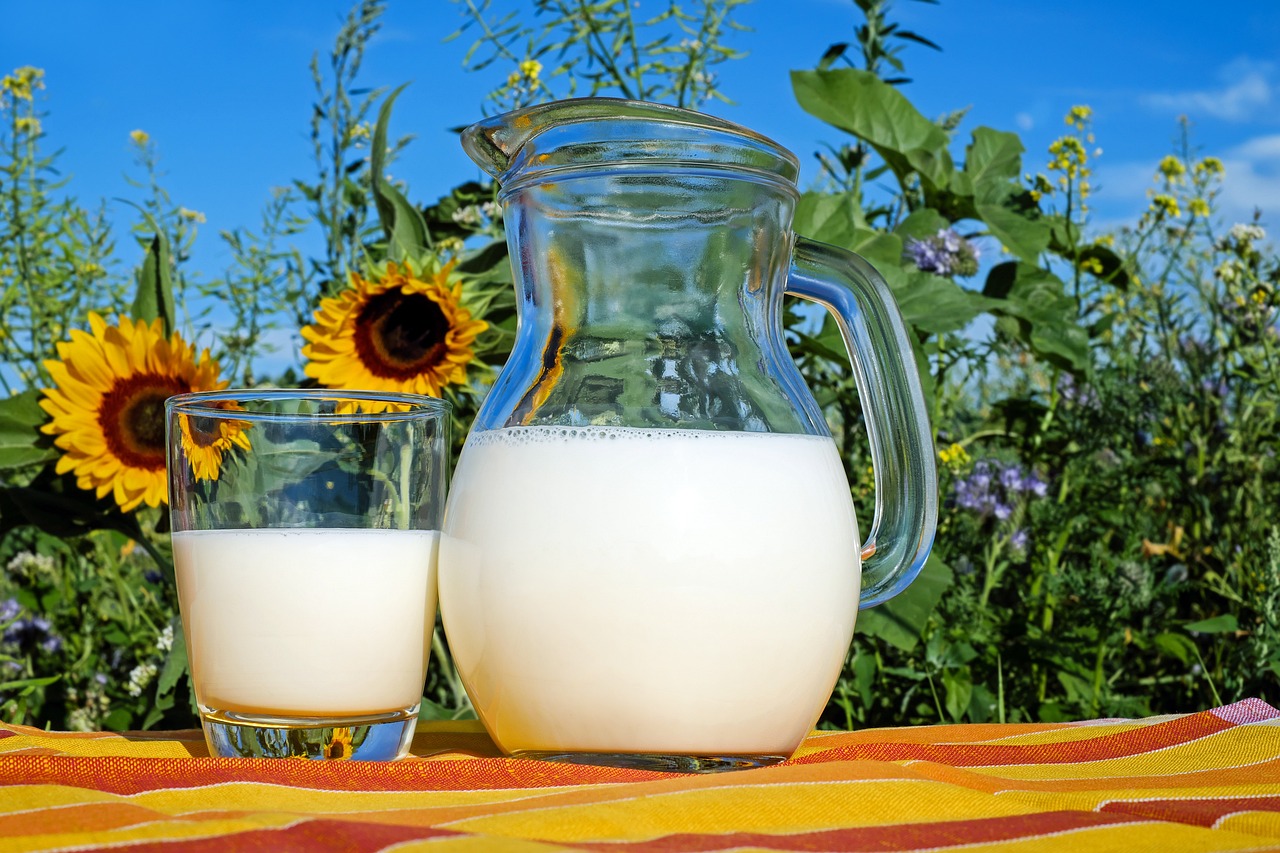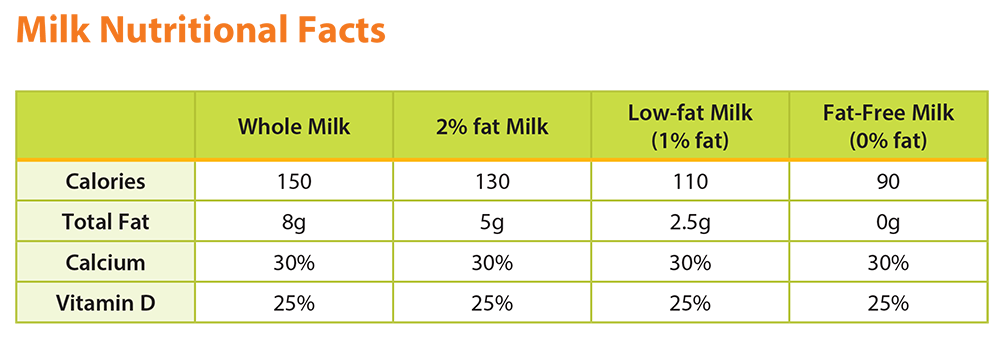Milk, cheese, yogurt, and ice cream are all part of the dairy group. Drinking milk helps build strong bones. Unfortunately, most Americans do not drink or eat enough foods from the dairy group every day. For this reason, it is important to learn about the science and nutrition of dairy foods. In this lesson, students will explore milk by learning about the importance of the digestive enzyme lactase and the many health benefits associated with consuming dairy products.

Different types of milk vary in nutritional composition (i.e. protein, lipid, carbohydrate). Milk from mammals (e.g. cows, goats) contains the carbohydrate lactose (milk sugar). Milk from plants contains other dietary sugars, for example, soy milk contains sucrose and rice milk contains glucose. Almonds and coconuts are also sources of milk. Almond and coconut milk contain no cholesterol or lactose, coconut milk, however, is very high in saturated fat and consumption should be moderated. Both lactose and sucrose are disaccharides. A sugar composed of two simple sugars is a disaccharide. A molecule of lactose is made up of the two monosaccharides, glucose and galactose. One simple sugar unit is a monosaccharide. A molecule of sucrose is made up of the monosaccharides glucose and fructose. The human digestive system uses specific enzymes to breakdown the disaccharide molecules into their component monosaccharides, which are then absorbed and utilized by the body. Enzymes are protein molecules that change the rate of a reaction without being depleted in the process. Lactase is the enzyme that acts on lactose, and sucrase acts on sucrose. Digestion of this nature occurs primarily in the small intestine. People who are lactose intolerant lack a sufficient amount of lactase to breakdown the lactose sugar.
The following factors influence the curdling properties of milk:
- Bacteria: Bacteria can be added when making cheese or yogurt, but can also develop as milk begins to sour.
- Acids: Acids can be found in juices or vegetables. The addition of an acid will result in the precipitation of casein, the most abundant milk protein. Acid produces a soft and spongy texture due to the decreased pH.
- Tannins: Tannins can be found in coffee or tea. They will curdle milk in the presence of acid and heat. For example, if you add slightly old milk to coffee, you may see curdles form.
Dipping a glucose strip in rice milk should automatically allow for the identification of rice milk. Since the glucose in soy milk (glucose + fructose = sucrose) and cow’s milk (glucose + galactose = lactose) is bound, rice milk is the only milk type with free or unbound glucose. Bacteria will convert lactose to lactic acid causing milk to curdle. This process can take from 4 to 16 hours to complete. Milk curdled by bacteria has similar characteristics as milk curdled with acid. Additional information regarding the role of bacteria in yogurt production is included in the Magnificent Microbes lab found in FoodMASTER Middle: Yogurt.
Students may wonder if the enzyme drops or solutions have glucose in them. Allow students to test the drops with the glucose strips to test concentration. Students will find that the drops are negative for glucose.
The lactase enzyme works best at room temperature. This enzyme will break down the carbohydrate in milk, lactose. Our bodies need lactase to digest lactose. Without this enzyme, our bodies cannot break down this disaccharide into two monosaccharides, glucose and galactose. Simple sugars that cannot be broken down are called monosaccharides.
FoodMASTER Middle Lessons
FoodMASTER (Food, Math and Science Teaching Enhancement Resource) is a compilation of programs aimed at using food as a tool to teach mathematics and science. For more information see the Background & Introduction to FoodMASTER for Middle School. This lesson is one in a series of lessons designed for middle school:


